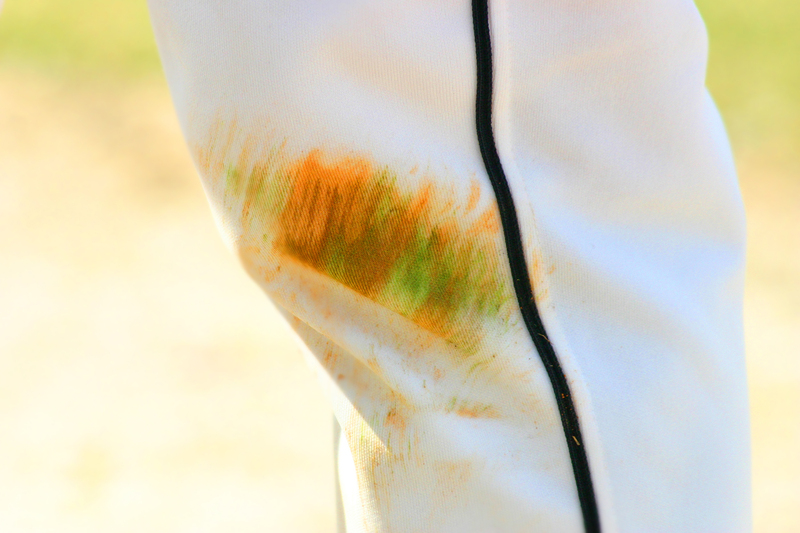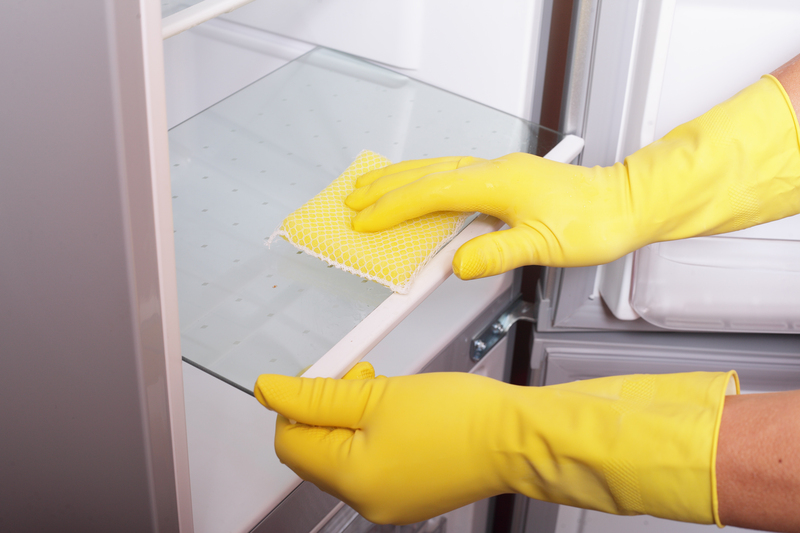Achieve freshness with advanced curtain cleaning strategies
Posted on 18/09/2025
Achieve Freshness with Advanced Curtain Cleaning Strategies
Curtains and drapes play a vital role in enhancing the style, privacy, and comfort of your living spaces. However, they are also notorious for absorbing dust, allergens, odors, and environmental pollutants over time. To maintain a fresh and inviting home, it is essential to keep your curtains immaculately clean. In this comprehensive article, you'll discover advanced curtain cleaning strategies, detailed tips, and the latest techniques to ensure your window dressings always look--and smell--wonderful.

Why Prioritize Curtain Freshness?
Before diving into in-depth cleaning methods, it's crucial to understand why curtain hygiene impacts both the appearance and well-being of your home environment:
- Healthier Air Quality: Curtains trap airborne dust, spores, and dander, affecting indoor air quality. Deep cleaning helps eliminate these irritants, particularly beneficial for allergy sufferers.
- Prolonged Fabric Life: Routine maintenance prevents dirt and stains from damaging curtain materials, helping your investment last longer.
- Vibrant, Fresh Appeal: Clean curtains revive a room's look by restoring vibrant colors and eliminating musty odors.
- Mite and Germ Prevention: Keeping window treatments sanitized deters the growth of dust mites, bacteria, and even mold in humid conditions.
By implementing advanced curtain cleaning strategies, you can reliably achieve a fresher, healthier, and more attractive living space.
Assessing Your Curtains: Fabric Matters!
All curtain cleaning solutions are not created equal. The fabric type directly influences the most effective and safe cleaning method. Use the tag or manufacturer's instructions as a starting point, and divide them as follows:
- Cotton and Linen: Durable and often machine-washable, but may shrink--care with water temperature is vital.
- Polyester and Synthetic Blends: Resilient to washing and less prone to wrinkling.
- Silk, Velvet, and Wool: Typically require dry cleaning or specialized attention to protect colors and fibers.
- Blackout and Thermal Curtains: May feature special coatings--avoid high heat and aggressive detergents.
Identifying your curtain blend is step one towards effective--and safe--cleaning.
Daily and Weekly Curtain Care
Embrace Regular Maintenance
Frequent light cleaning is the secret to achieving ongoing freshness. Even a few minutes a week can dramatically reduce dirt build-up and prolong the time between deeper cleans. Adopt these daily and weekly routines:
- Vacuuming: Use the upholstery nozzle attachment to gently vacuum from top to bottom, removing dust and pet hair.
- Shaking or Brushing: Take lightweight curtains outside weekly and shake thoroughly. For heavier drapes, use a soft-bristled brush.
- Spot-Treating Stains: Dab small stains with diluted gentle detergent or a solution of water and white vinegar. Always test an inconspicuous area first.
- Odor Neutralization: Lightly mist curtains with a fabric-safe deodorizer or sprinkle baking soda, wait 30 minutes, then vacuum it off.
Advanced Curtain Cleaning Strategies: Deep Clean Methods
1. Professional Curtain Cleaning Services
For those seeking the most comprehensive solution, professional curtain cleaners use specialized equipment and techniques:
- Steam Cleaning: Effective for killing germs, mites, and breaking down deep-set grime. It's suitable for most sturdy fabrics and is often done without removing the curtains from their rods.
- Ultrasonic Cleaning: Uses ultrasonic waves in water baths to dislodge dirt and pollutants, safe for delicate or intricate materials.
- Dry Cleaning: Indispensable for silk, velvet, and heavily lined curtains where moisture could cause shrinkage or damage.
Tip: Always confirm that a cleaning company specializes in curtain or drapery cleaning before scheduling a service.
2. DIY Deep Curtain Washing
You can perform a thorough wash at home if your curtains' care instructions allow it:
- Remove Hardware: Take down hooks, rings, and any weights. Close Velcro strips to prevent snags.
- Pre-Treat Stubborn Stains: Gently rub a mixture of water and mild detergent into particularly dirty spots with a soft cloth.
- Machine Washing: Use a gentle cycle and cold water. Avoid overcrowding. Use a mild detergent to preserve fabric brightness.
- Hand Washing: For extra caution or delicate materials, soak in a tub of lukewarm water with mild detergent. Gently agitate, then drain, rinse throughout, and carefully squeeze excess water--never wring.
- Drying: Air-dry curtains by hanging them back on the rod while damp to prevent wrinkles. Avoid direct sunlight, which may cause fading.
- Ironing or Steaming: Smooth away wrinkles with a steamer or by ironing on a low setting as per material requirements. A vertical steamer is best for hanging drapes.
Pro tip: To achieve freshness in curtain cleaning, add a splash of white vinegar to the rinse cycle. It breaks down lingering odors and softens minerals that cause stiffness.
3. Specialized Techniques for Problem Curtains
Some curtains present unique challenges due to specific fibers, designs, or functional coatings. Here's how to keep curtains fresh without compromise:
-
Blackout Curtains:
- Avoid high heat and immersion. Instead, dust regularly, spot clean with a damp cloth, and deodorize using fabric spray.
-
Delicate Sheer Curtains:
- Handwash very gently, then roll inside a towel to absorb water. Hang immediately to prevent stretching and misshaping.
-
Decorative Trims or Embellishments:
- Test for colorfastness. Avoid rough handling--spot clean or consult a dry-cleaning professional when in doubt.
Odor Removal and Freshening Hacks
Sometimes, even after a thorough wash, curtains can retain musty or stubborn odors. Achieve long-lasting freshness with these proven odor-removal tactics:
- Baking Soda Bath: Sprinkle over dry curtains and leave overnight before shaking or vacuuming away residue.
- Essential Oil Spray: Mix a few drops of tea tree, lavender, or lemon oil with water in a spray bottle and mist lightly--never soak.
- Activated Charcoal Bags: Hang behind the curtain hem to continuously absorb moisture and odors.
- Sunlight Refresh: On dry days, hang curtains outside in indirect sunlight. UV rays help eliminate bacteria and mildew odors naturally.
Preventive Strategies for Curtain Freshness
Smart Placement and Ventilation
- Position Away from Smoke/Kitchen Fumes: As much as possible, avoid hanging fabric curtains in smoky or greasy air streams.
- Promote Air Circulation: Open windows regularly to let fresh air circulate and minimize stale odors.
- Dehumidifiers: Use in humid environments to deter mold and mildew growth on curtain fibers.
Anti-Dust and Allergen Practices
- HEPA Filters: Equip your vacuum cleaner with a HEPA filter when cleaning curtains to reduce dust re-circulation.
- Air Purifiers: These devices can significantly reduce airborne dander, pollen, and dust in rooms with heavy window treatments.
- Allergy-Proof Covers: On bedroom drapes, consider anti-allergen spray or covers to reduce allergen exposure.
Design Choices for Easy Maintenance
When updating your window treatments, opt for machine-washable fabrics, fewer embellishments, or designs with detachable linings for easier, advanced curtain cleaning.
Seasonal Deep Clean Schedules
Maintaining freshness is not a once-a-year task. Instead, build deep curtain cleaning into your seasonal routine:
- Spring: A full wash to clear out winter's accumulated dust and stale air.
- Summer: Air-dry in gentle sun for a natural, fresh scent.
- Fall: Spot clean and check hems, hooks, and linings for repair needs.
- Winter: Vacuum regularly to combat indoor heating-related dust and static.
Pro tip: Mark cleaning dates on a calendar or set phone reminders to ensure consistency.

Common Questions About Curtain Cleaning
Can I use laundry detergent for all curtain types?
No. Select a mild or gentle detergent designed for delicates or consult the fabric label. Harsh chemicals can cause discoloration and break fibers, especially on silks and specialty weaves.
How do I prevent curtain shrinkage?
Use cold water, gentle cycles, and avoid tumble drying. For delicate curtains, air-drying while hanging is the safest option. Never wring or twist fabrics harshly.
Should I remove rings and hooks before washing?
Yes. This prevents snagging, stretching, and potential breakage of both hardware and fabric.
Are there eco-friendly curtain cleaning choices?
Absolutely. Opt for eco-friendly detergents, use natural deodorizing agents like vinegar and baking soda, and air-dry whenever possible to reduce energy use.
Conclusion: Elevate Freshness with the Right Strategies
Achieving fresh curtains is more than just a matter of aesthetics--it's a step towards a healthier, more vibrant home. By understanding your curtain's unique materials, using preventive maintenance, and adopting cutting-edge cleaning methods from professional steaming to ultrasonic technology, you can ensure window treatments remain pristine for years.
Implement these advanced curtain cleaning strategies to renew every corner of your abode with a sense of cleanliness and style. With the right knowledge and consistent care, freshness is always within reach!
Ready to experience a home makeover? Start with your curtains--your guests, your family, and your health will thank you!




